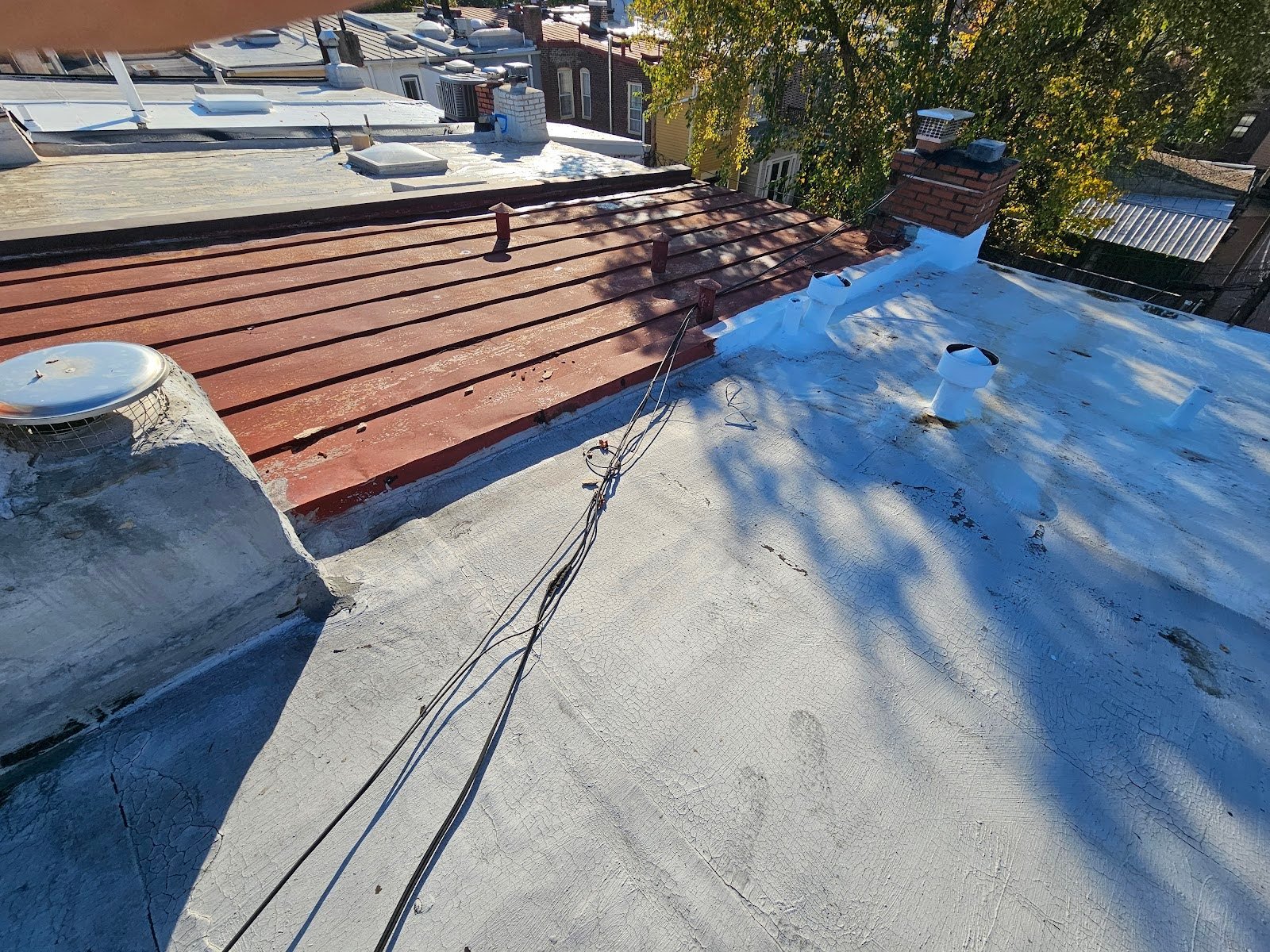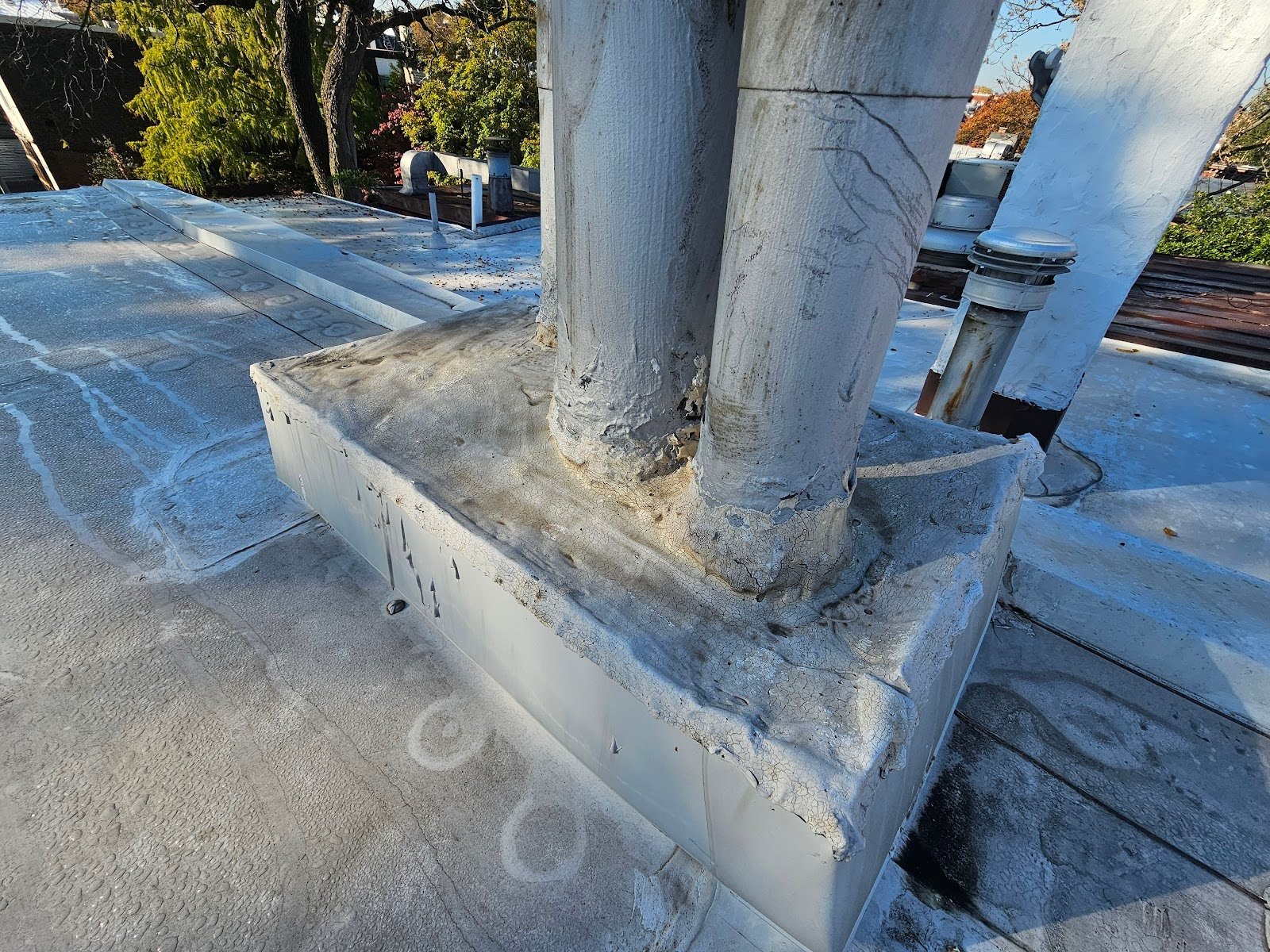Modified Bitumen Systems with Advanced Roof Coatings
This past week, we looked at a modified bitumen roof that had been coated with a white acrylic paint. We used that particular image to show a contrasting comparison between a different modified bitumen roof. We also showed a picture of the damage at the surface of the modified bitumen roof membrane where it had not been covered or coated with a roofing paint.
There are many different types of roofing paint, but particularly, there are specific types of paint that are required to be applied to the exposed surface of modified bitumen smooth roofing membranes. In the pictures we showed last week, we are not sure but believe, because visual signs indicate, that damage that was also likely caused during the initial installation but also exacerbated by the fact that it was not coated with a roofing paint.
A closer view of that same picture from last week follows below. It’s possible that this area, where there is not an overlay or overlap, was accidentally burned during the torching process. The upper surface of the membrane is not intended to be burned. So often, here in Washington DC, there are many different types of roofing contractors and we find that many or either incapable or on willing to take the time to install these roofs properly and this is one of the quintessential signs or types of damage that comes as a result of either improper installation or inadequate interest or lack of attention in the lifecycle upkeep and maintenance of roofing after the initial installation.
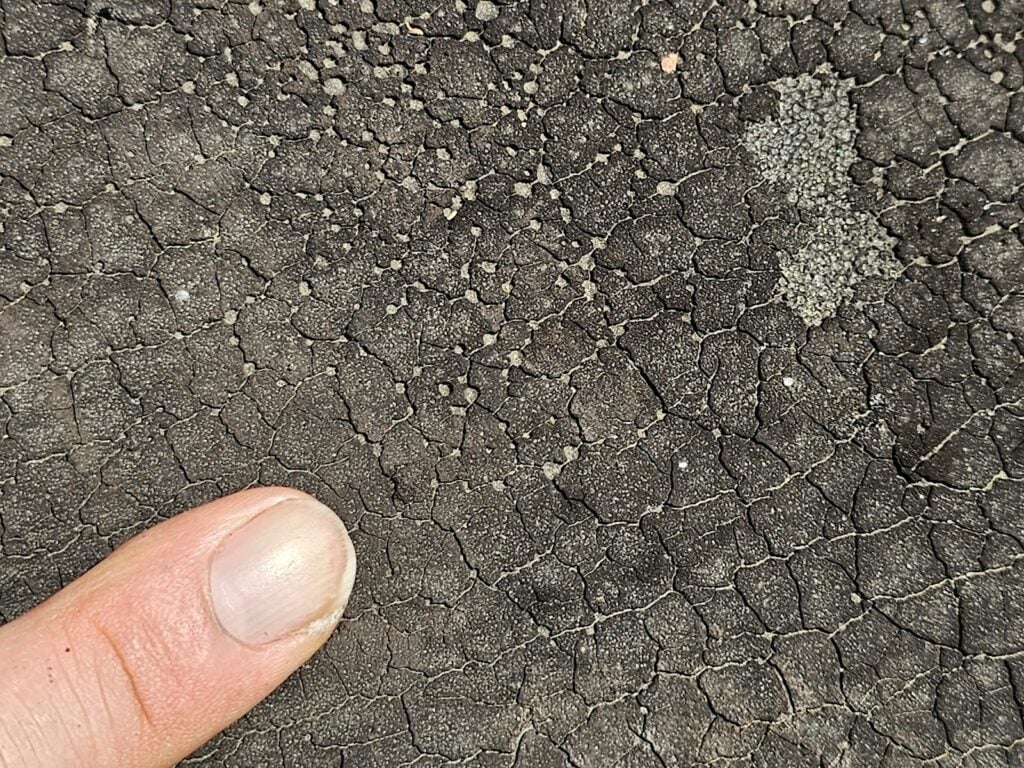
As we discussed above, one of the types of roof coatings has an acrylic coating applied on top of the membrane. By contrast, the one below also has a coating, but this coating is different. It looks a little bit like a silver color and in fact many years ago one of the common brands used to be called Silver Dollar. This coating is different from the acrylic coating, it’s an aluminum type paint. Some of us very old people, like myself, can remember using it extensively when we were young and child labor was expected.
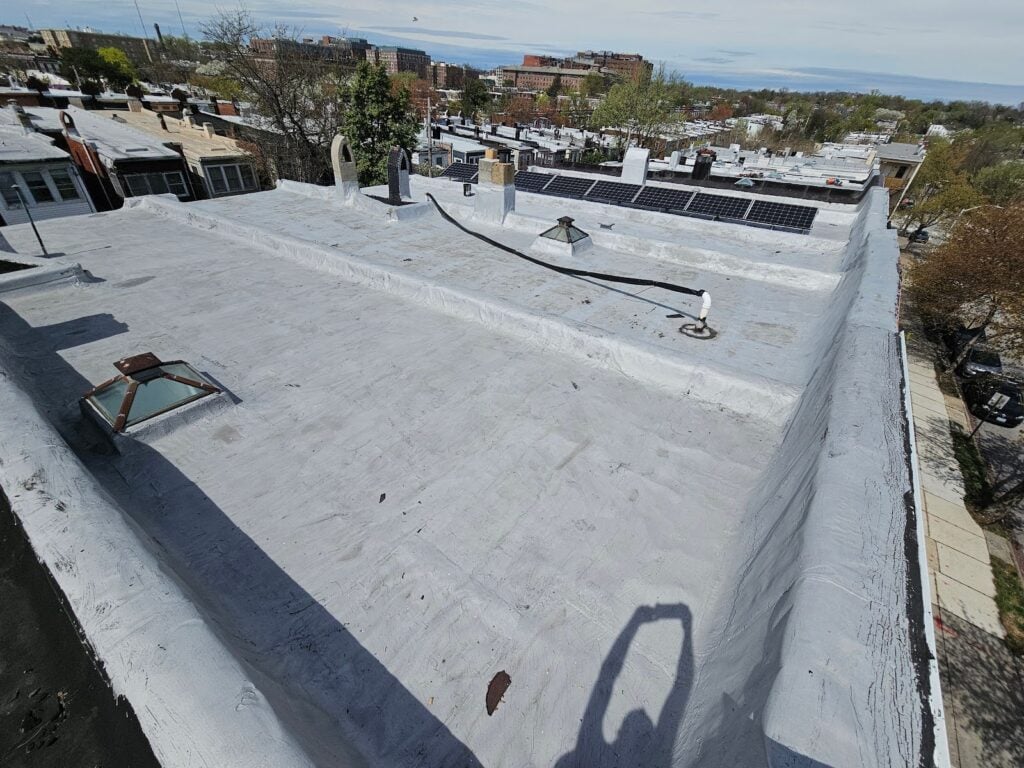
Here, the picture below, you can see the parapet while at the sides of the low slope roof framing system. Low slope roofs like this are often referred to as flat roofs, but generally they’re not actually flat. In fact, it’s important that no parts of the roof itself actually are perfectly flat.
They are generally required to have at least a quarter inch of fall per linear foot. Across a long span of a roof of 50 ft, the roof would be required to have over eight inches of fall. Eight inches sounds like a relatively large amount, larger than a typical step in a stairway or curb at a street, but it’s actually shallow and almost appears flat across a long span.
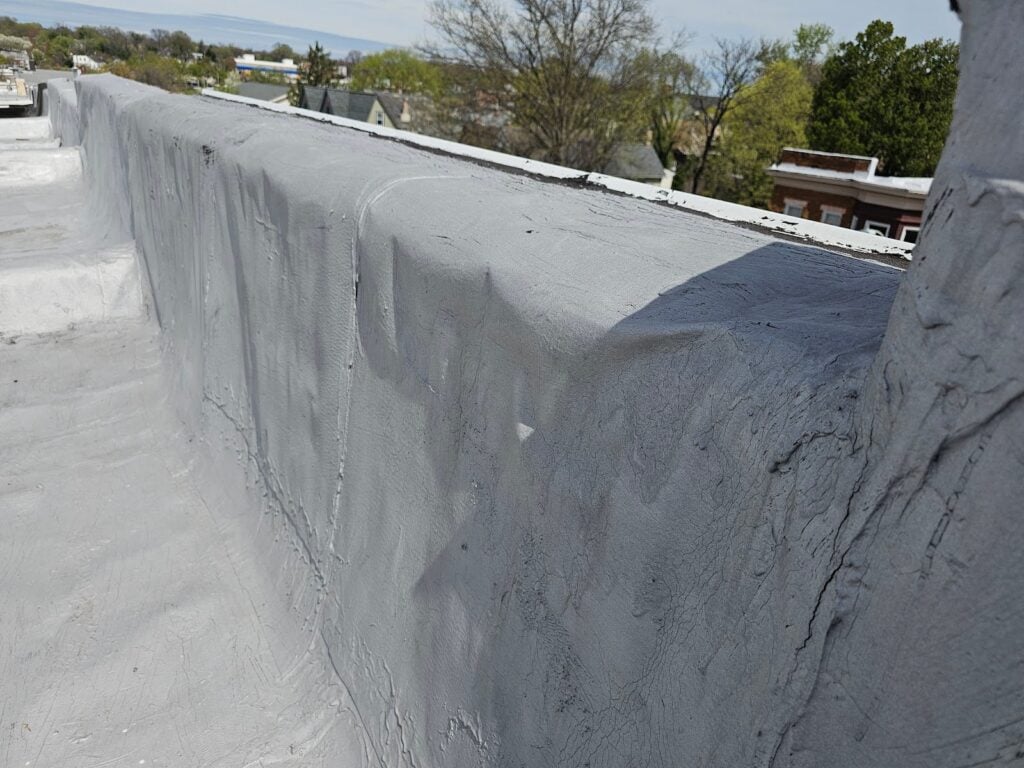
The picture below shows an example of a defect that goes back prior to the coating. Even though the topic of this article series is really about the applications of coatings, at modified bitumen roof systems, there are often issues that should be repaired or properly installed, prior to the application of a coating system, to make the coating work effectively. Otherwise the coating doesn’t have the power to fix voids, gaps, omissions, and many other types of defects in the initial installation.
Specifically, in the picture below, there is separation between the overlap of the successive layers of the membrane. Modified bitumen rolls are generally a few inches more than three feet in width. The overlapped portion of a roll of modified bitumen can be as little as three inches. When the torching is either excessive or inadequate, there can be delamination. This type of delamination happens both in the horizontal or low slope type field area of the roof, but happens even more commonly at the upturn at the side parapets of the roof. Here, there are forces that pull the separate bands of the membrane in different directions.
Those forces are exacerbated during the typical daily thermal changes and as well with the more drastic seasonal changes. Often, as a result separation will occur at these locations, particularly when the torching or initial installation application isn’t applied at the critical range of temperature. One of the reasons that those forces are exacerbated is because as the membrane turns upwards, there’s a bend in the direction, that bend takes it out of its otherwise planar form. At that transition the overlaying membrane is in greater compression than the underlying layer which leads to or adds pressure that leads to delamination.
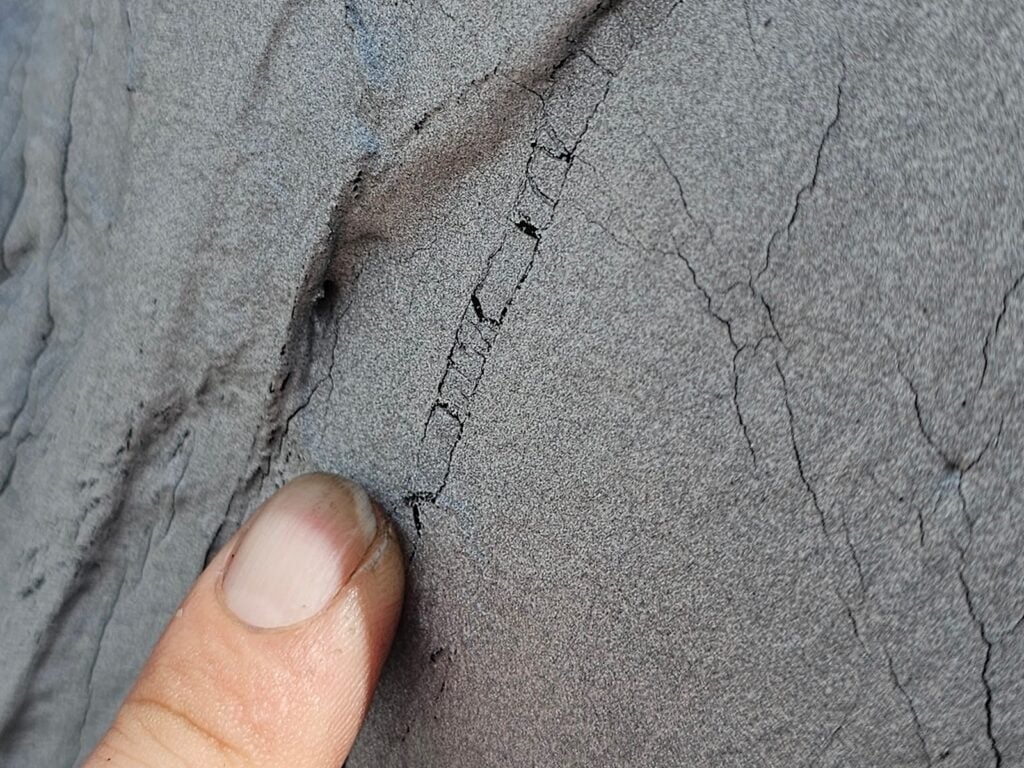
We provide this information here on our blog, and our website, to help our customers and future clients, and we recommend every building owner in DC who values the longevity of their roof (and their investments) and building use a contractor who values the simple and important principles of proper roof construction like Dupont Roofing DC. Our company specializes in flat roofing here in Washington DC and we’re happy to help building owners of almost all types.
Learn more about our company and the proper techniques of working with roofing on historic buildings in Washington DC here on our blog at DupontRoofingDC.com, and you can call us at (202) 840-8698 and email us at dupontroofingdc@gmail.com. We are happy to help and at least talk through options.

